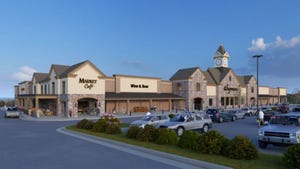How Retailers Can Determine If Their Business is Customer-Centric
With a wealth of options to choose from—no matter what product or service they may be looking for—customers are more informed than ever and have more power to make a decision that best fits their needs. In the world of fast-moving retail, this means every trip is a prize and competition takes place several times per week.
August 5, 2019

Sponsored by Aimia Intelligent Shopper Solutions
Competition for customers has never been greater. With a wealth of options to choose from—no matter what product or service they may be looking for—customers are more informed than ever and have more power to make a decision that best fits their needs. In the world of fast-moving retail, this means every trip is a prize and competition takes place several times per week.
In order to thrive in this atmosphere, a retailer must be customer centric. What the customer wants, thinks and expects should drive every decision. Creating a positive experience throughout the customer journey and leaving them absolutely satisfied is now the expectation. With that in mind, it’s essential to remember that if a retailer is not centered on what the customer wants and needs, those customers will become less valuable, less profitable and perhaps leave altogether. So how can retailers make sure they’re attending to consumers’ expectations?
The way to meet these high expectations is through data—the right data collected, analyzed and communicated in the right way. With data-based insights, retailers can give customers what they want when they want it—sometimes before they even realize they want it. When a retailer is customer-centric, those customers appreciate being understood and return the favor with their loyalty and sales.
Is your organization customer-centric? Ask yourself if these statements are true, somewhat true, or false.
We understand our customers’ behaviors and preferences.
We monitor customer KPIs weekly.
We know which promotions most efficiently and effectively drive category sales.
Our reporting tools enable our decision makers to act quickly.
We respond with relevant communications and offers at the right time.
We communicate the value of customer centricity to our employees and hire/promote around the acceptance and practice of this core value.
Our category management process uses the lens of our customers.
We can identify our price sensitive customers, the locations they shop, and the products they purchase.
We have a consistent process to implement initiatives, evaluate effects, and communicate results.
We understand the best purchase channel and promotional vehicles to engage with our customers.
Our customers view their shopping experience as one that is catered to them.
We effectively use segmentation in the decision-making processes.
Answering “false” to some of these may be an indication that an organization may need to be focusing more on customers’ needs. If a business isn’t customer-centric, it can lose customers and trips fast. To learn more about how to make your business more customer-focused, get in touch with the customer insight experts at Aimia Intelligent Shopper Solutions at https://iss.aimia.com/contact/.
Aimia ISS decodes the ‘messages’ that customers leave in the data and helps translate them into simple, actionable insights and enable effective business decisions throughout an organization. In today’s environment, it’s the only way to develop loyal customers and thrive.
You May Also Like




